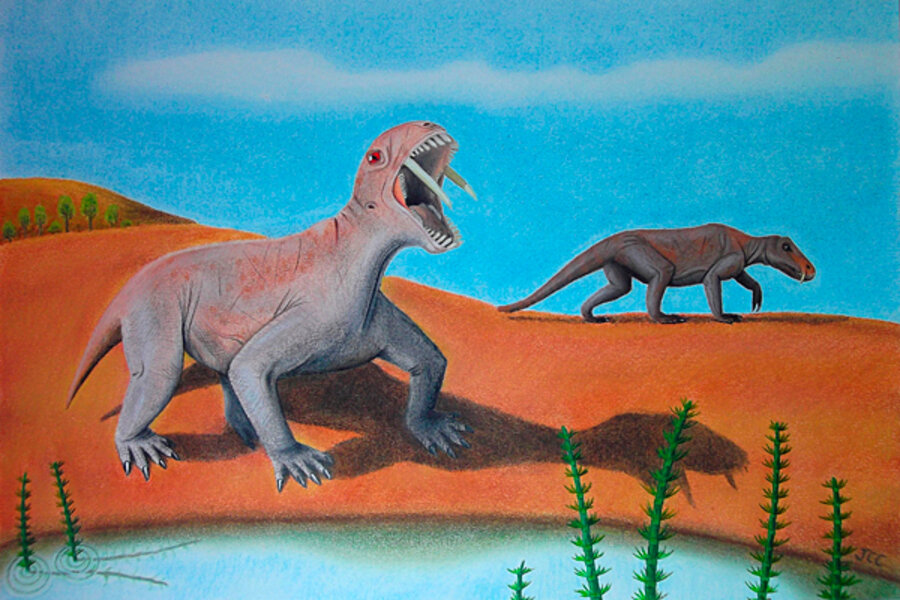Saber-toothed vegetarian: What did it need those huge fangs for?
Loading...
Teeth like sabers might ordinarily conjure images of fearsome extinct predators, but now researchers have revealed the earliest giant-fanged plant-eater known, a beast the size of a large dog that once munched on leaves and stems in ancient Brazil.
However, just because this creature was a vegetarian does not mean it was harmless — its dagger teeth likely helped it deal with predators and rivals, scientists explained.
The newfound creature is named Tiarajudens eccentricus — "Tiarajú" after where it was found, "dens" is Latin for "tooth," and "eccentricus" for "eccentric." And this animal certainly was odd. In addition to the crayon-size saber canines, the entire roof of its mouth was covered with teeth. [Top 10 Deadliest Animals]
"If you asked me how surprised I was about finding this fossil, I can tell you that finding a fossil so bizarre asTiarajudens eccentricus, a fossil that looks like if it has been made from parts of different animals, is like finding a unicorn," vertebrate paleontologist Juan Carlos Cisneros at the Federal University of Piauí in Teresina, Brazil, told LiveScience. "You see it, but you don't believe it."
This animal was a kind of anomodont, the most abundant four-legged creatures of the Permian, the 50-million-year-long period right before the age of dinosaurs. Anomodonts belonged to a group known as therapsids, which gave rise to modern mammals.
Back when T. eccentricus was alive 260 million years ago, the land where it lived was dry, with dunes interspersed with lakes and rivers, similar to Namibia or Botswana today. Now the area is very wet and forested, next to a dam within a farm that produces rice and cattle. Although dense vegetation often hides fossil sites in Brazil, the researchers managed to find this locale using Google Earth, spotting it from satellite photos by how much stone was eroded, which gave clues as to how much bone might get exposed, as well colors distinct to the age of the rocks they wanted to investigate.
The researchers noted that T. eccentricus was the first known therapsid to have its top and bottom teeth fit together for an efficient chew. This probably helped it grind up highly fibrous plants, just as ruminants such as cows and sheep do today. Grasses did not exist at that time but it may have fed on stems or leaves of Permian flora, Cisneros said.
As for its saber teeth, the researchers noted T. eccentricus might have used them just as the musk deer and water deer of Asia use theirs — to scare away predators and perhaps battle competitors. If so, these findings hint that sparring contests might have appeared "as soon as herbivore-dominated communities were established in terrestrial environments more than 260 million years ago," Cisneros said.
The scientists detailed their findings in the March 25 issue of the journal Science.





